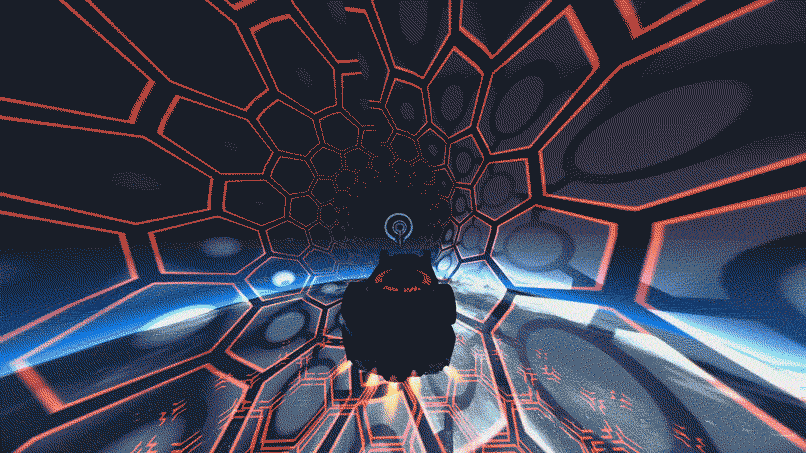A Guide To Most Distance Mechanics
> Basic Gripfly
For any player aiming to expel some degree of competence in the area of speed and/or in difficult levels in this game, you must first learn what the fuck gripfly is and how to do it.
This is an example of gripfly:

The practice involves using grip to keep yourself in the air, while using boost to keep moving forward.
If you have never seen gripfly before, it might be a result of the fact that you have not watched any in game replays of top players. (To view replays, have a level selected in the menu, but don't enter it. Then press Delete on the keyboard. Then you can use Q and E to scoll between leaderboards. To select a replay, press Enter. To view the replay you selected, press Delete. If you use controller, figure it out yourself.)
While not so terribly interesting in it of itself, gripfly has some major advantages:
1. Compared to traversing the air with wings, gripfly is often significantly faster.
2. In levels without wings, it is a fast way to cross gaps.
There are, however, circumstances where wings are faster than gripfly. On tight turns, for example, wings are faster since making tight turns with gripfly is very slow. Most of the very very basic uses of gripfly I don't think are worth covering, since they all are pretty much demonstrated pretty well by the world record replays on official levels. If you want to just see it in action and learn how it works in general, looking at replays is what I would recommend. It is worth noting that some other players call gripfly 'hover fly', 'flying without wings', 'hovering', and 'upsidedown flying', but the long standing term in the Distance community has always been 'gripfly'. These other terms are not to be confused with 'boost fly', which refers to the method of pointing boost downwards and your nose upwards to retain height.
This is an example of gripfly:

The practice involves using grip to keep yourself in the air, while using boost to keep moving forward.
If you have never seen gripfly before, it might be a result of the fact that you have not watched any in game replays of top players. (To view replays, have a level selected in the menu, but don't enter it. Then press Delete on the keyboard. Then you can use Q and E to scoll between leaderboards. To select a replay, press Enter. To view the replay you selected, press Delete. If you use controller, figure it out yourself.)
While not so terribly interesting in it of itself, gripfly has some major advantages:
1. Compared to traversing the air with wings, gripfly is often significantly faster.
2. In levels without wings, it is a fast way to cross gaps.
There are, however, circumstances where wings are faster than gripfly. On tight turns, for example, wings are faster since making tight turns with gripfly is very slow. Most of the very very basic uses of gripfly I don't think are worth covering, since they all are pretty much demonstrated pretty well by the world record replays on official levels. If you want to just see it in action and learn how it works in general, looking at replays is what I would recommend. It is worth noting that some other players call gripfly 'hover fly', 'flying without wings', 'hovering', and 'upsidedown flying', but the long standing term in the Distance community has always been 'gripfly'. These other terms are not to be confused with 'boost fly', which refers to the method of pointing boost downwards and your nose upwards to retain height.